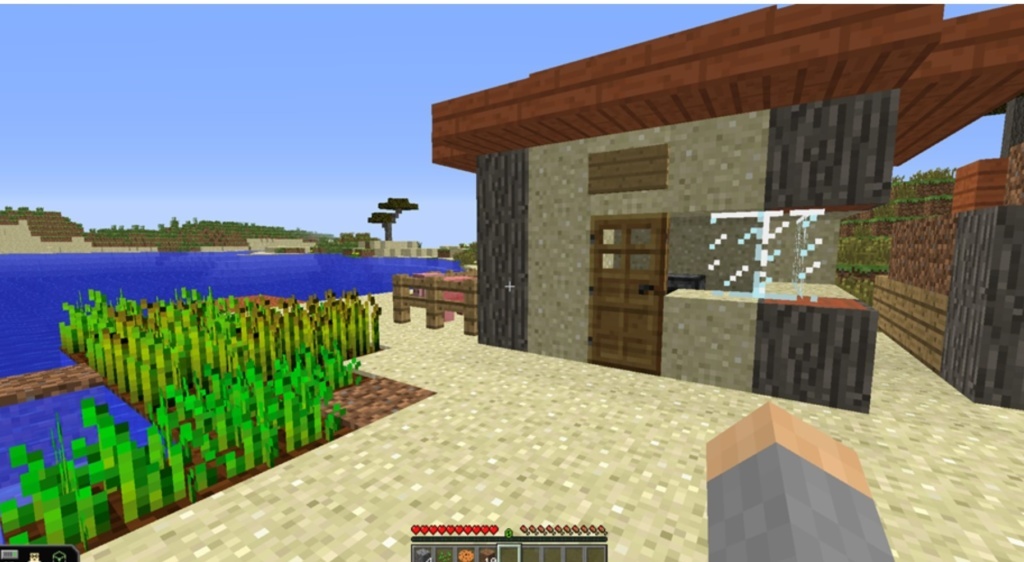
It is hugely important that we find and develop effective ways to encourage young people to engage with science1 - children’s interests in science tend to decline from 10 years of age2 and are usually established by 14 years3. This can be mitigated by engaging children in practical, investigative, activities associated with science4; computer games, being played by 69% of 6–10 year olds and 81% of 11–14 year olds in the UK5, provide a way to do this.
Minecraft is both an extremely popular6 game and ideal for communicating concepts7,8, as it contains a range of features which relate to real-world processes and environments and can be used to engage children with various topics. It is a construction-based game which allows players to build a huge range of structures and items with a variety of blocks of different properties and textures. Players can play individually in single virtual worlds, or collaboratively in shared worlds on secure servers. Commands can be entered, offering opportunities to practise basic coding skills. There are multiple opportunities for scaffolding learning, employing collaborative learning approaches9,10 and supporting children to construct meaning with each other through dialogue during learning and play11. Children often feel a sense of expertise and ownership in using a game that they are familiar and experienced with for learning12. Minecraft is used as a pedagogical tool around the world across a spectrum of subjects, from Science to English to Art11-13 and has been described as one of the most important games of the current generation7.
There are two key modes of Minecraft, ‘Survival’ and ‘Creative’. Both can be utilised in educational settings; it is important to understand the features of each mode in order to effectively select the most appropriate for the intended learning outcomes. There are also three other modes, ‘Adventure’, ‘Hardcore’ and ‘Spectator’, which are modifications of the two key modes. In all cases, students are supplied with virtual worlds that can range from containing no specific pre-built content, requiring players to construct relevant creations, to fully pre-constructed worlds relevant to the topic covered and students are able to explore.
These modes, and illustrations of how they can be used in educational settings through examples from Science Hunters, an outreach and research project based at the University of the West of England and Lancaster University which follows a constructivist pedagogy utilising anchored instruction and constructionism to engage children with science through Minecraft14, are explained below.
Survival mode
In Survival mode, players must collect resources, build structures, fight off hostile mobile entities (‘mobs’), explore the world they find themselves in and eat in order to survive and stay healthy. They have an inventory which they populate by gathering items. These resources are finite; players can only gather what they come across, with specific blocks only found in particular places. As they obtain more of an item, its availability increases in their inventory and will then decrease again, and eventually run out unless replaced, as the item is used. Items can be used to create other items and tools through various processes (known as ‘crafting’).
Survival mode also features ‘health’ and ‘hunger’ bars, which affect players’ progress. The hunger bar is represented by ten drumsticks (equivalent to 20 hunger points) which replenish as players consume food. If the hunger points are low, the player will lose abilities such as sprinting. If it is at zero, the health bar, represented by ten hearts, will deplete. When sufficient hunger points have been gained, the health bar regenerates.